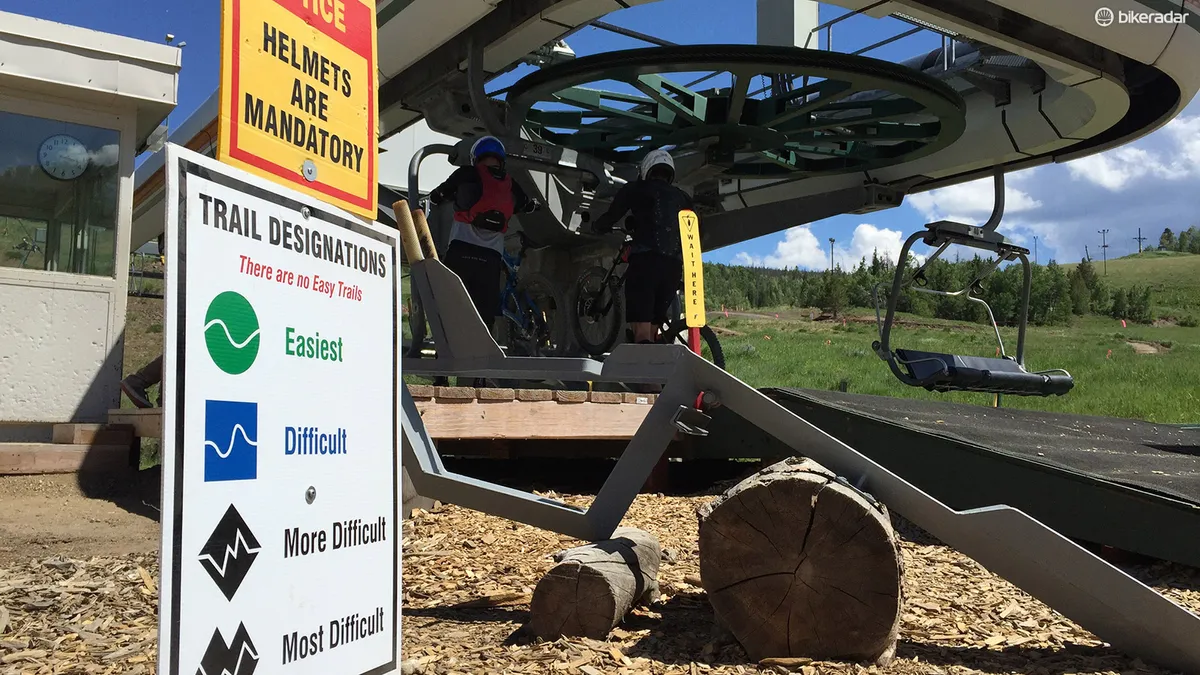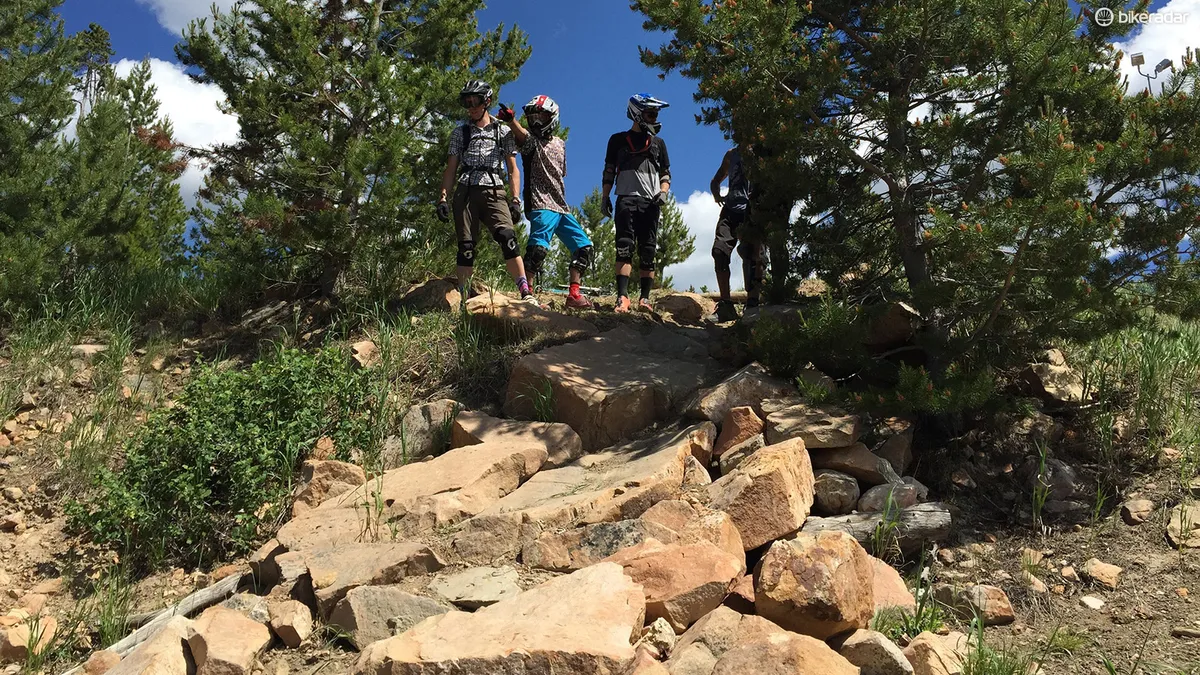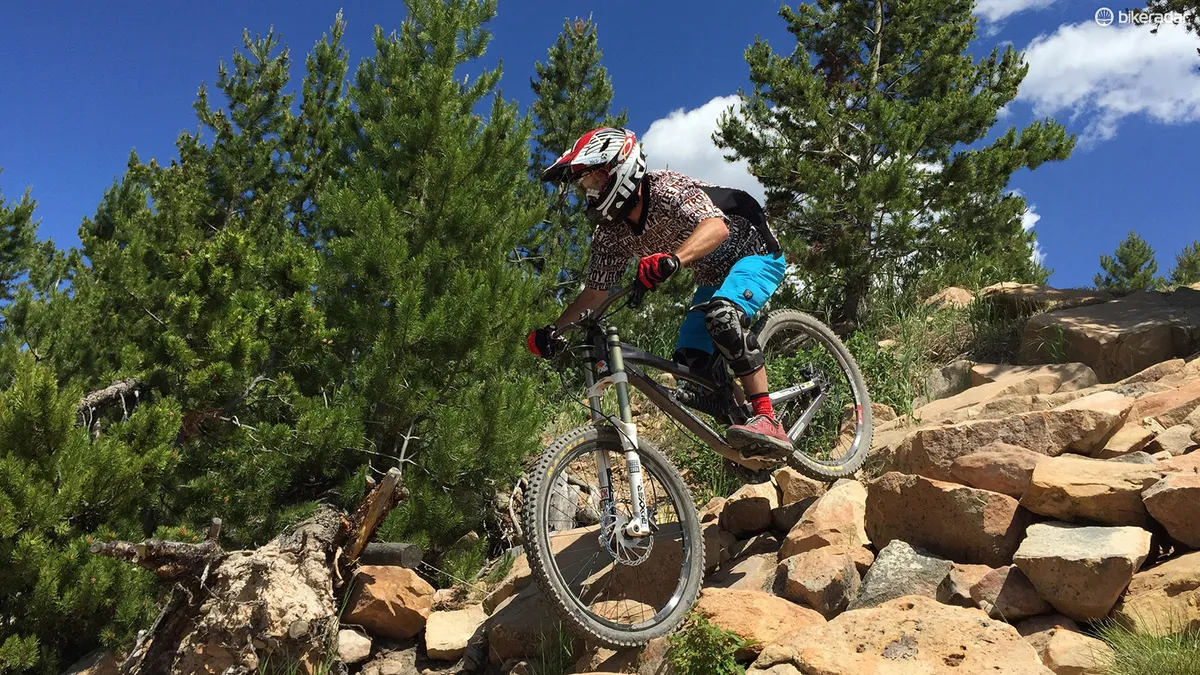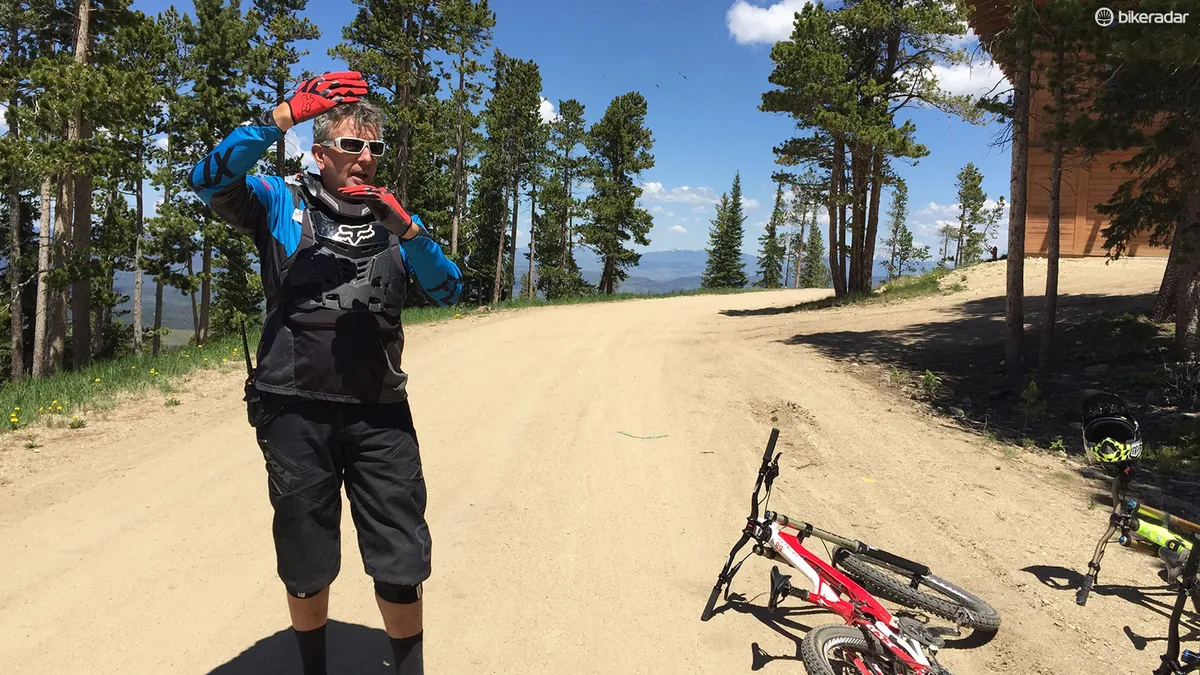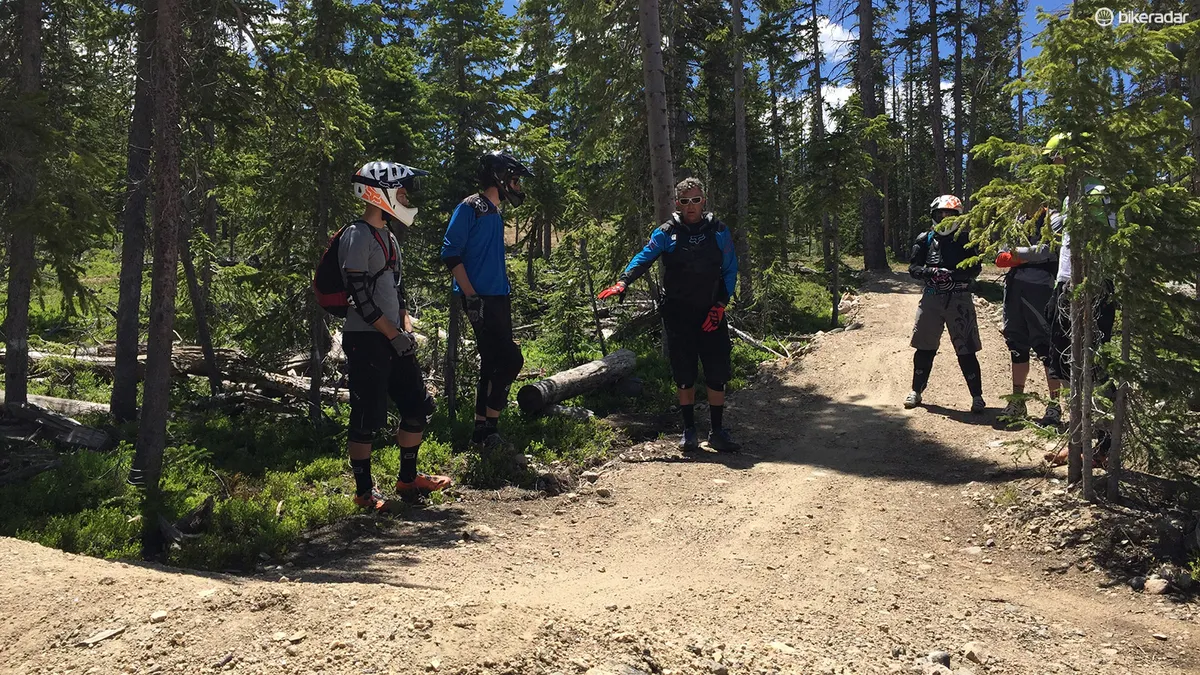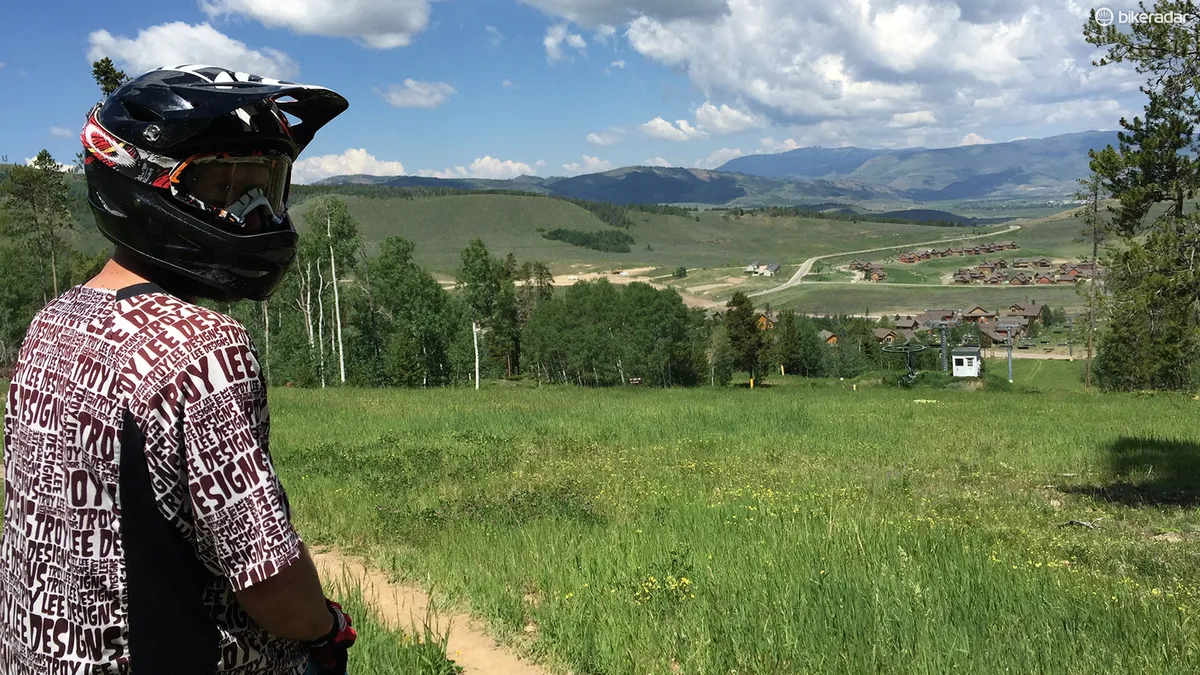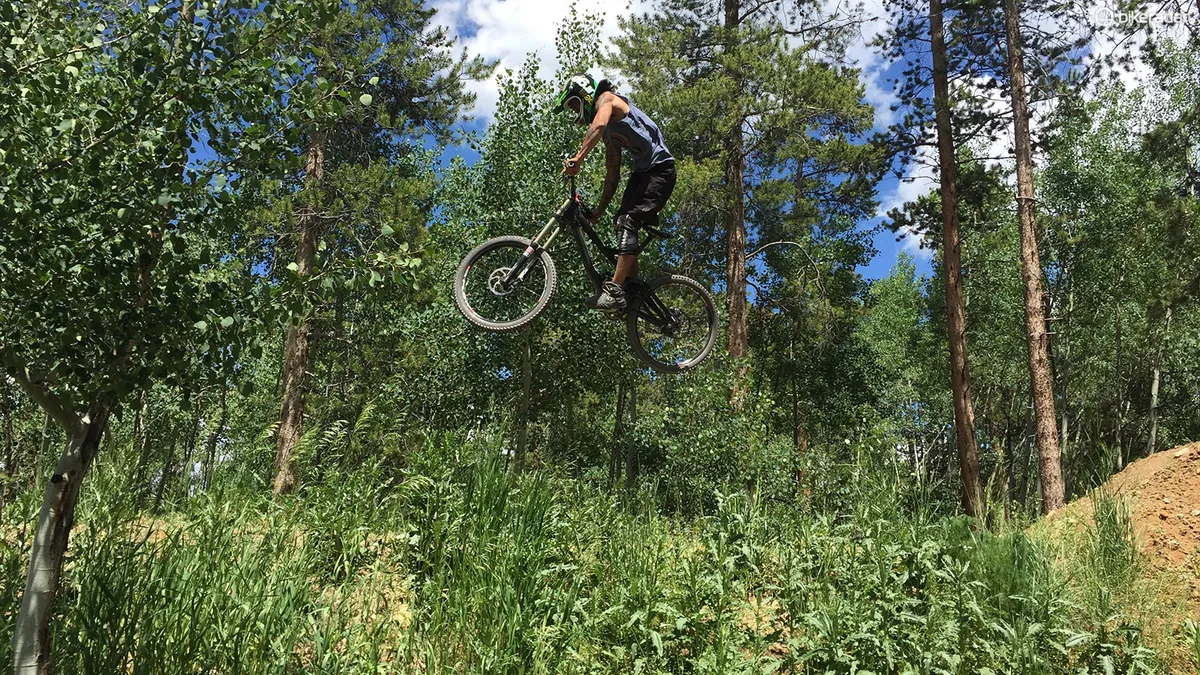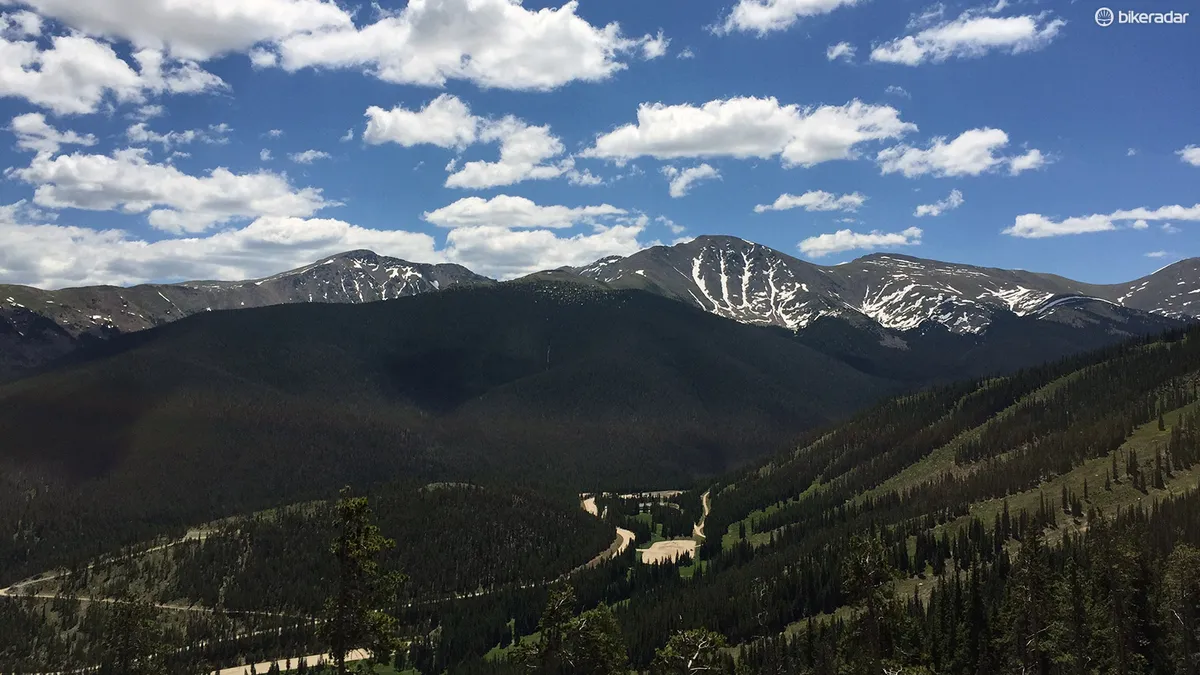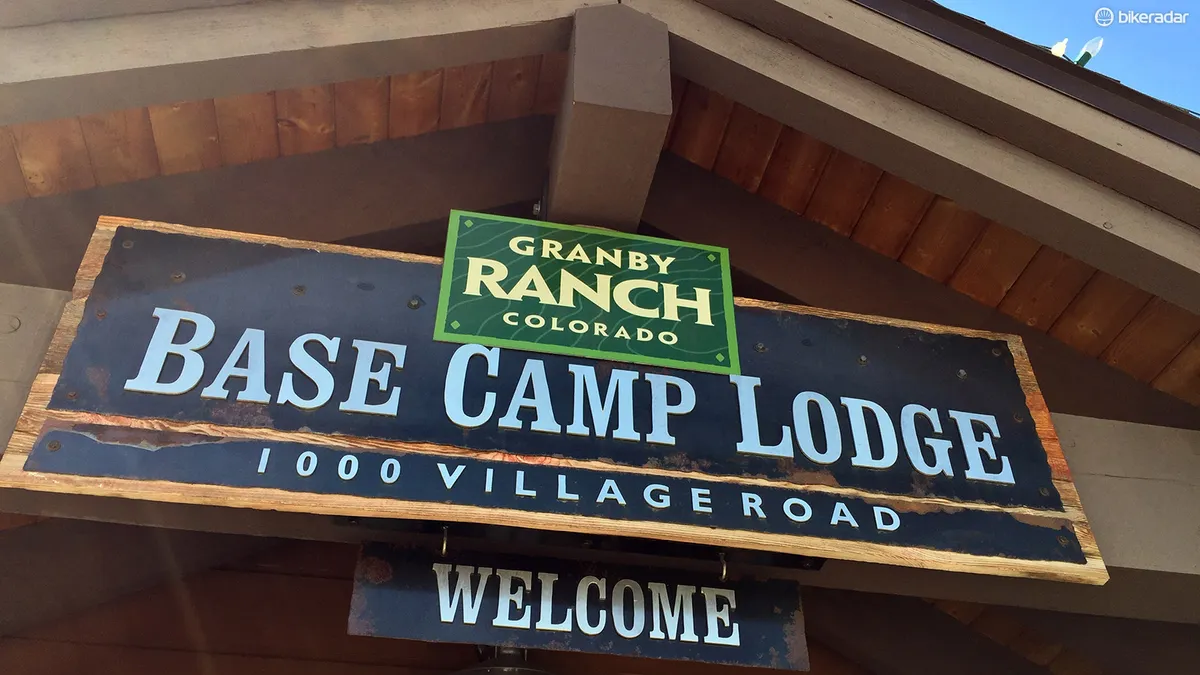If you feel your fitness is solid but your skills could use some work, head to a lift-assisted bike park for a day. Going downhill is certainly fun but it can also make you a faster – and safer – rider overall, too.
The UK may not have the same quantity of bike parks as elsewhere in the world, but as their popularity has increased more and more are springing up. Efficient vehicle uplifts get you to the top of the hill leaving you energy to spare for working on your technique on the way back down.
BikePark Wales, Revolution Bike Park and Aston Hill are all popular destinations for UK mountain bikers looking to develop their skills and push their riding.
Here’s why that day pass might be the best investment you make this season.
Practice makes perfect
As the saying goes, if at first you don’t succeed, try, try again. Whereas you might only be able to hit a persistently challenging feature once or twice on a typical ride, a bike park setting let you session a section of trail over and over until you’ve got it just right.
At BikePark Wales, for example, a lap comes in around 20-30 minutes. In a full day, you can rail that same corner more than a dozen times.
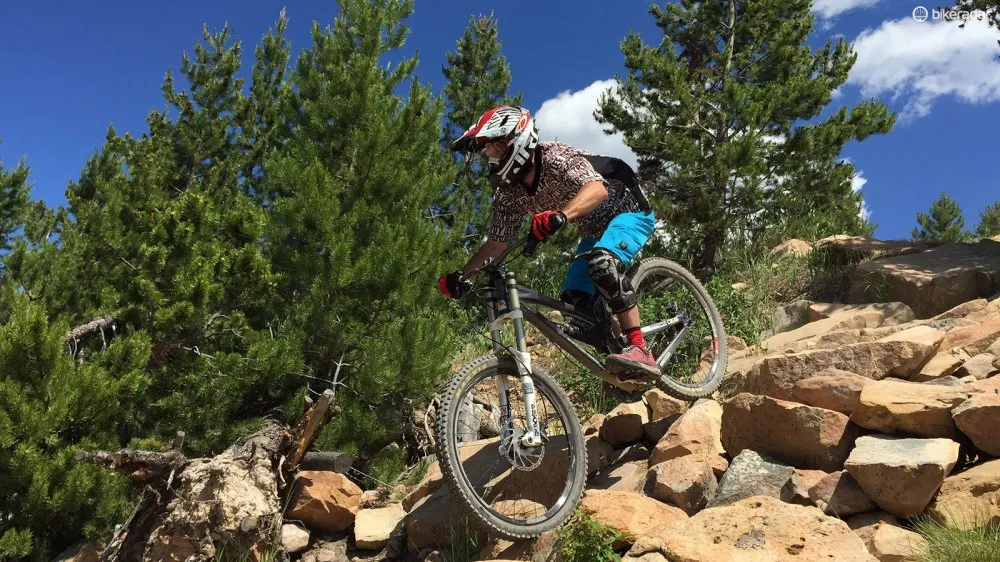
Lift-assisted bike parks provide a unique opportunity to session the same section of trail over and over again until you've got it just right
“You can ride that trail, and ride that trail, and ride that trail over and over almost until it’s muscle memory,” Wes Bennett, mechanic and downhill coach at Bike Granby Ranch, in Colorado, told BikeRadar US.
“I can change this here, I can do this differently here… It just gives you more options. It allows you to repeat the same motion over and over in a short amount of time.”
It’s all about progression
Well-designed bike parks will offer riders a wide variety of terrain with multiple levels of difficulty for the same type of feature. This lets them appeal to a lot of different skill levels but it also gives beginners and intermediate riders room to grow.
Finally feeling comfortable on that 2ft (60cm) drop? Try the 4ft one afterward, and then maybe the 8ft one after that. The idea is that there’s something for everyone, and never a need to skip a skill entirely because it seems too intimidating.
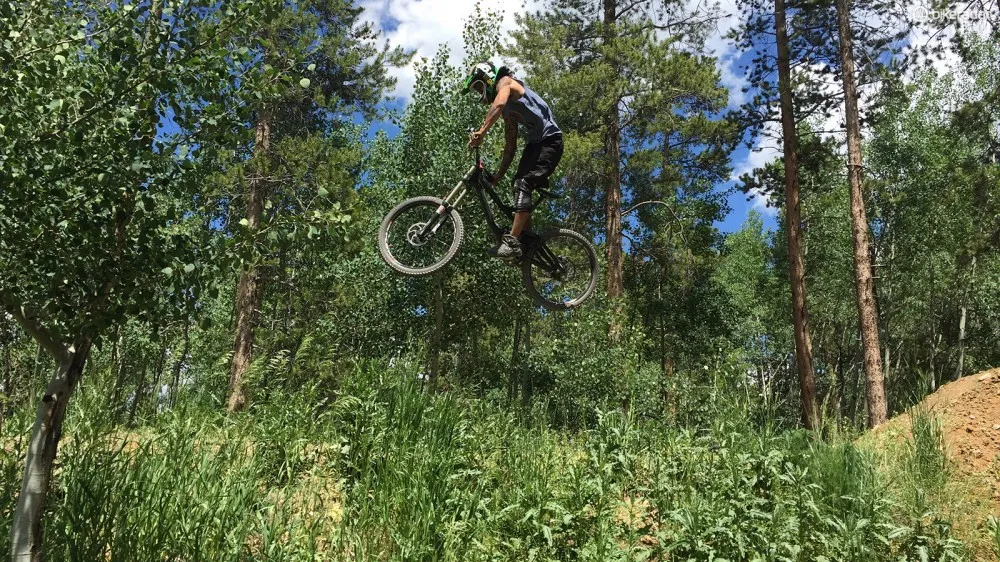
The beauty of progression is that you aren't forced to hit stuff like this straight out of the gate if you don't want to
“Bike parks on the whole can help you progress because there are so many varying levels of terrain,” said Bennett. “You can start off and stay in one area and then progress from green to blue to black, whereas if you’re out on a trail system, it’s really variable.
“In the bike park, you have all the range of abilities but you also have the infrastructure services. You can stop and get a drink, tooling, medical assistance. And if you’re trying to get into the gravity aspect of the sport, you can make lap after lap and really get tuned in.”
Show me how it’s done
One of the most appealing aspects of bike parks is the easy access to expert-level coaching they often provide. Most of us learned how to ride mountain bikes through trial and error but once you get to a certain level, those errors start bringing much bigger consequences. Blowing a slow-speed corner is no big deal, for example, but casing a huge gap jump is a whole different ball game.
“If you don’t do it in a lesson, it’s really abusive and high-impact,” said Bob Barnes, head instructor for Trestle Bike Park in Winter Park, Colorado.
“This is getting more of that same kind of repetition. There’s a lot to it. We have a really specific methodology to gain the most skill in the shortest amount of time. It creates a lot of consistency, too, if you have a different instructor. It builds on prior skills.”
“This sport is really just off-road motorcycle riding without a motor,” added Barnes, who has a long history in motocross racing.
“All the same specialty skills apply that you need to be successful in riding your dirt bike. We can advance their skill level pretty quickly so that they have a lot of control over their bike, they can go where they want and at the speed they want to go, they can jump. We give them the skills to do what they want to do out here.”
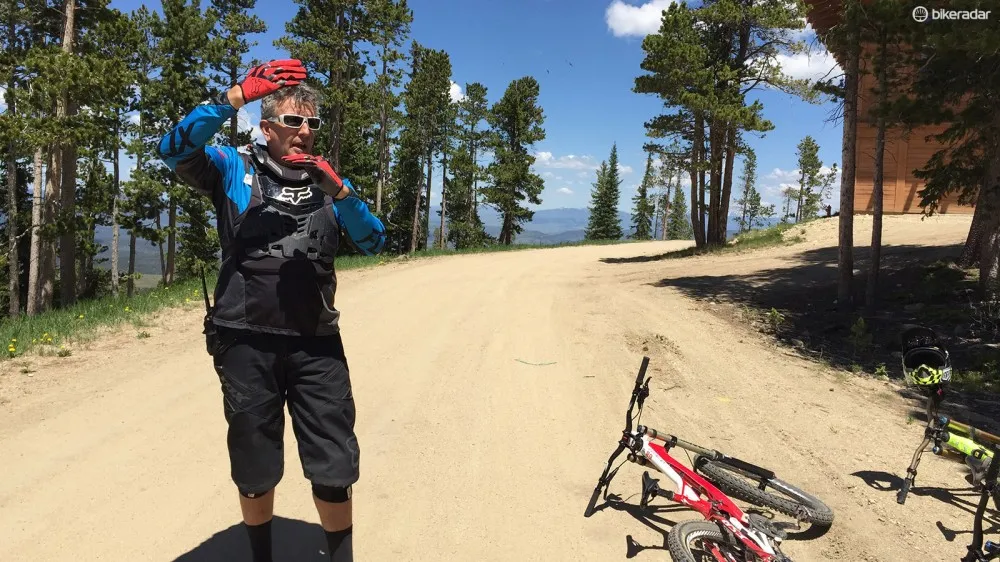
Trestle Bike Park head instructor Bob Barnes shows you how it's done
Perhaps most importantly, proper instruction can help you become a faster and more skilled rider without the bumps and bruises (or bone breaks, dislocations, and concussions) that can often go with the trial-and-error method.
Many UK bike parks offer coaching courses for small groups or individuals that mean you can really focus on getting those skills dialled with detailed observation and feedback. At BikePark Wales, for example, a well-worth-it £75 gets you a half day of group coaching, and uplifts for the afternoon to practice your skills after class lets out. If you want the undivided attention of a coach, £145 gets you a half day session, followed by an afternoon of uplifts.
Play it safe
Bike parks may seem like a random arrangement of dirt piles and wooden bridges but in many cases, there’s actually a lot of science behind how they’re built. A properly designed jump may send you 10ft (3m) off the ground but if you crash, the effective crash height (what your body actually feels in terms of impact) might be just a fraction of that depending on the shape and height of the landing area.
Think of it like an Olympic-style ski jump: you might be dropping a long way but it’s not exactly like jumping out of a building.
Many bike parks will also gravitate more toward tabletops than gap jumps so there’s less of a consequence if you don’t make the transition. If it’s a good park, the trails and features will be regularly maintained, too, so you won’t have to worry about a blown-out berm giving way beneath you. The features may still be hard but at least they’ll be predictably hard.
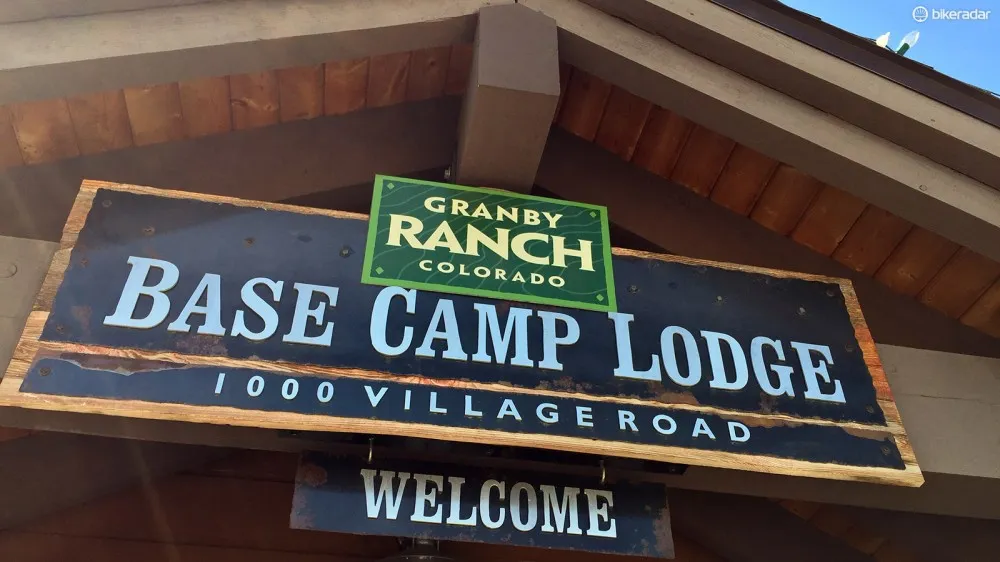
One major advantage of established lift-accessed bike parks is that they invariably have qualified medical staff on hand
You’ll likely also have the opportunity to rent some high-level protection gear if you don’t have it already – a small price to pay to help ensure that you’ll be able to go to work on Monday.
And if all else fails, a good bike park will always have medical staff on hand to assist you within minutes of a nasty wreck.
Save your gear
The repeatability aspect of bike parks make them a natural setting for dialling in your bike – suspension settings, tyre pressures, control positions and so on. That said, repeated downhill runs are also notoriously tough on gear. If you’re primarily concerned with advancing your skills, consider doing so on someone else’s bike – namely, a rental.
Keep in mind that this is only a worthwhile endeavour if the rental bikes are not only sufficiently high quality but also properly maintained. And while resorts factor general wear and tear into the fee, you’ll still have to pay if you break something.
That said, I put about half a season’s worth of wear on a rear Maxxis Minion DHF tyre in just one and a half days of lift riding – and those suckers are expensive.
Figuring out where to go
Okay, so you’ve decided that you want to hit a bike park but where should you go? Proximity to where you live will be a major factor, of course, but aside from that, there are a lot of things to consider when choosing a resort.
In the UK, it’s worth planning ahead as space on uplift services can book up weeks, even months, ahead, particularly at weekends and holidays. It’s also good to get there early to make the most of your time, and nab a sweet spot in the ever-busy car parks.
“You want to make sure if you don’t have your own equipment, that they’re going to have equipment suitable for the type of riding you want to experience,” said Bennett. “A lot of people don’t take into account the altitude variance from where you’re coming from. If you’re coming from sea level in Richmond, Virginia on Monday and you’re in Vail, Colorado on Tuesday, it’s really not a good idea to do strenuous downhill mountain biking until you’ve had a couple of days of acclimatisation.”
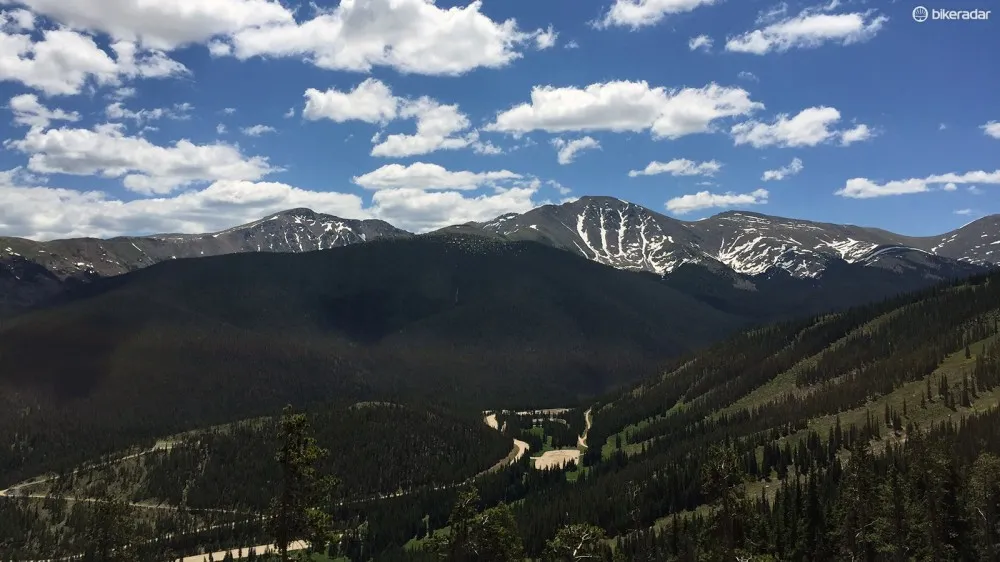
The beautiful scenery is included free of charge
Barnes stresses having a high-quality instructor staff to make the most of your trip.
“I hire two types of people as bike park coaches. One, make sure they’re kind, compassionate, empathetic, genuinely interested in helping people. Then, they’re either speciality bike people or championship motocrossers. I want really high bike skills to inspire those other riders into realizing there are a lot more opportunities to enjoy this park more than they’re enjoying it.”
Either way, few mountain bikers of any skill level will argue that a day spent going downhill is an absolute blast – and the fact that you can substantially improve your riding in the process is a major bonus.
“A smaller resort is probably going to give you a smaller, intimate feel,” said Bennett. “Find a resort that’s going to work for you. If you do your due diligence, you should have a pretty good experience.”
